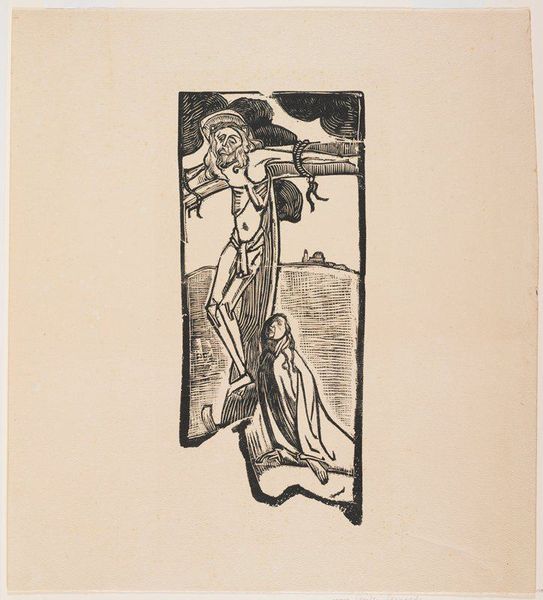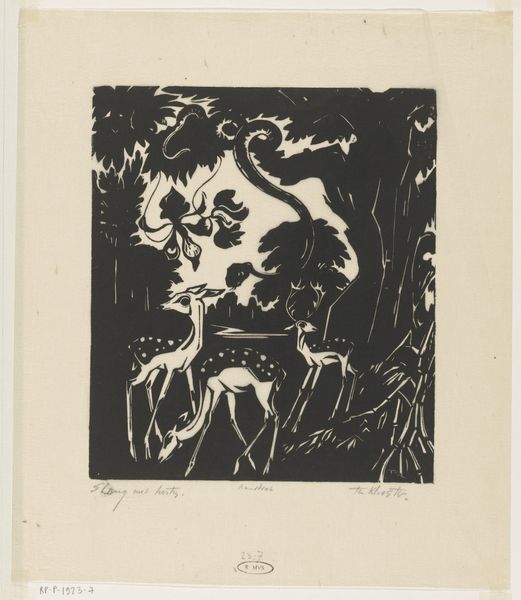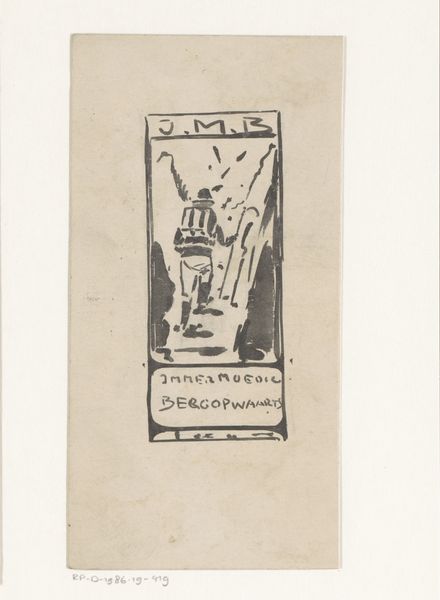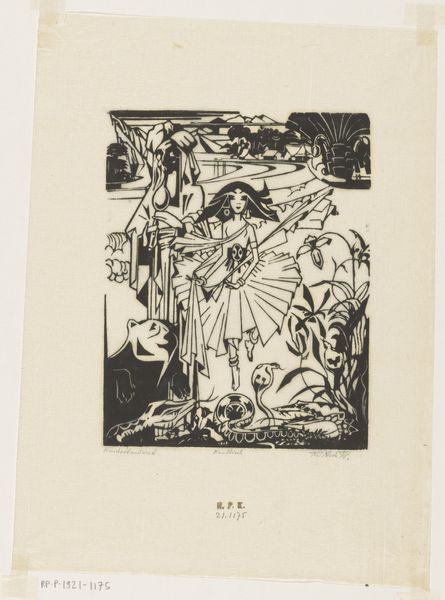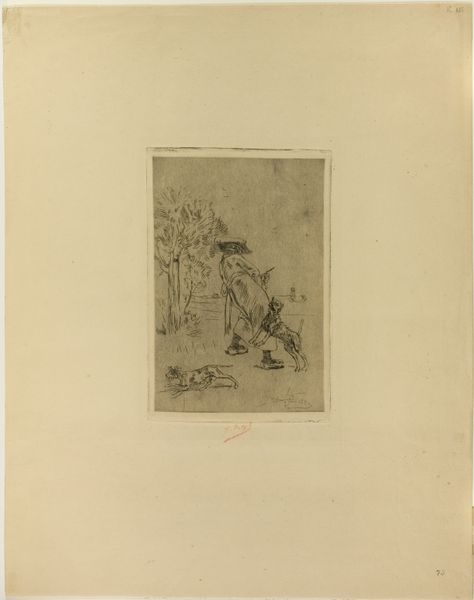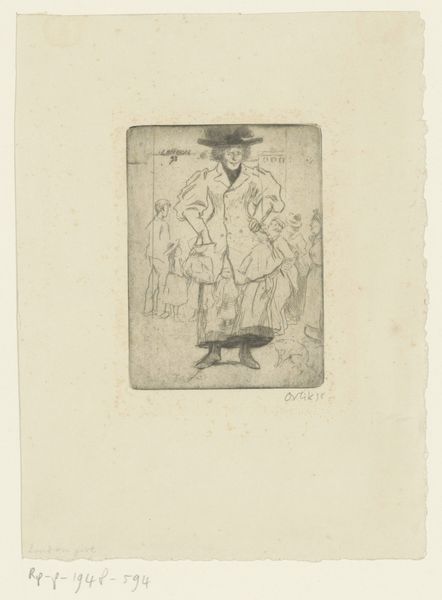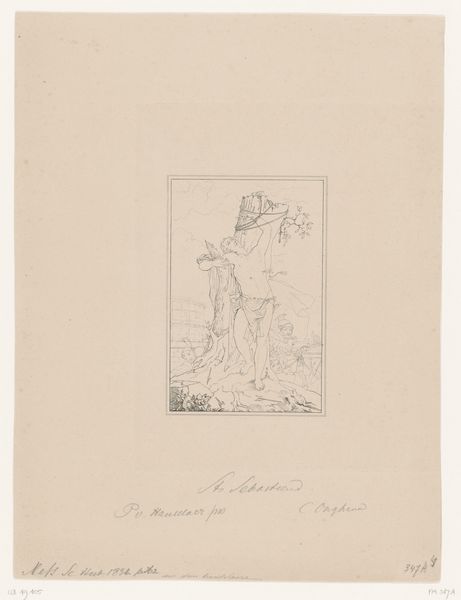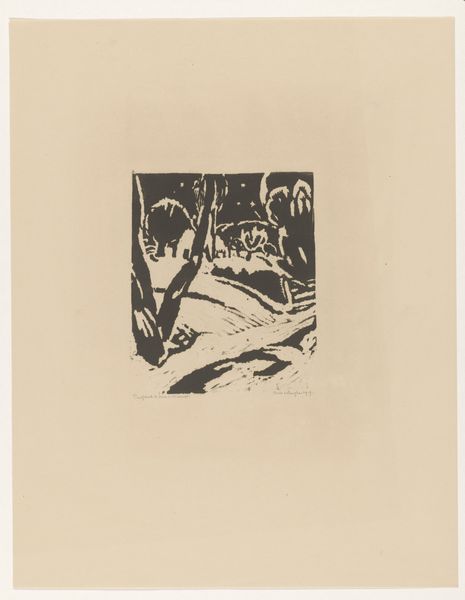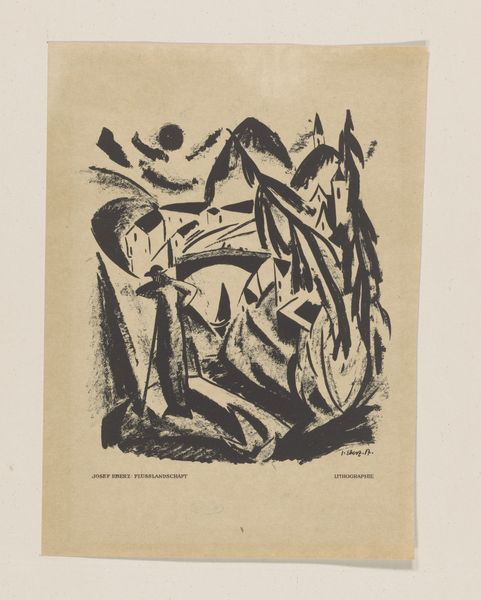
print, etching
#
dutch-golden-age
# print
#
etching
#
landscape
#
figuration
#
mountain
#
expressionism
#
symbolism
Dimensions: height 98 mm, width 70 mm
Copyright: Rijks Museum: Open Domain
Curator: Lodewijk Schelfhout's "Johannes de Doper," or "John the Baptist," an etching dating back to 1915, certainly offers much to consider. Editor: It's strikingly dramatic, isn’t it? That stark contrast in blacks and whites immediately grabs you, a real sense of almost tortured spirituality. And those sharply angled lines! Curator: Yes, the expressionistic style employed speaks to a broader artistic climate preoccupied with the inner life and intense emotional expression at the time, but also the Netherlands, still healing after WWI. We often find prints were important tools for wide dissemination of such imagery. It speaks, in a way, to art as both propaganda, in a sense, and comfort to those back home. Editor: I agree. I notice, too, how the landscape itself feels almost alive, mirroring the figure's internal turmoil. The way the mountains are stylized, the radiating light behind him, they're all integral parts of this dramatic presentation. Compositionally, it seems meticulously crafted to evoke this feeling. Curator: Absolutely. The setting itself pulls from some Symbolist visual strategies, a clear reference to earlier approaches in landscapes—and helps situate John's presence as separate from the community visible near him, emphasizing the historical narrative in a broader, allegorical sense. He appears apart, charged with his duty. Editor: Right. It’s like he's a conduit, standing between this earthly landscape, very roughly and powerfully rendered, and a higher realm, signaled by those radiating lines above him. I find it remarkable how a few etched lines can create such depth, emotionally and conceptually. Curator: Indeed. Consider its function then: as a portable image with potential mass distribution during a dark time, it invited engagement for all those invested in the church and in God, or even in one another. It encouraged personal and public contemplation on larger themes through intimate interactions with art. Editor: Seeing how successfully form amplifies content in this image really reframes my understanding of its function. A single artwork, speaking across multiple dimensions of understanding. Curator: Precisely. This piece, while simple, highlights some ways that public messaging intersects and integrates in society during moments of global crises.
Comments
No comments
Be the first to comment and join the conversation on the ultimate creative platform.



